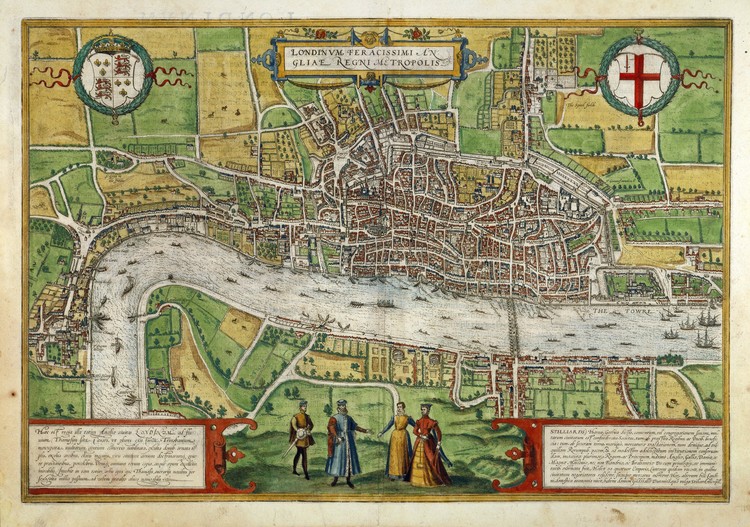
“Open City: London, 1500-1700″, an exhibit running at the Folger Shakespeare Library in Washington, DC, explores the two hundred year period in which London was transformed from a medieval capital to an early modern metropolis. During this period the city suffered a series of traumatic events including plagues, religious disputes, civil wars, the Great Fire, political instability and economic upheaval. This exhibit allows the audience to witness that despite these drawbacks in its history, London came out on top as the capital of a global empire. Looking at the city as places of gathering: churches, theaters and markets, “Open City” explores ways in which citizens dealt with the changes in their political, economic and social systems. The exhibit is curated by Kathleen Lynch and will be running through September 30th.
More after the break.
“So much of the way we operate in Western democracies is due to the rules of the game established in this period,” Lynch says of the exhibit, “All of these changes—to economic competition, to capital, to religion not being imposed by the state, to reigning in the power of monarchs—are changes that have defined our world today.” This holds true for the influence of the cultural aspects of London as well. ”Household names” such as Henry VIII and Elizabeth I; William Shakespeare, Christopher Marlowe, and Ben Jonson; Inigo Jones and Christopher Wren still have a profound impact today.

This was a defining period of change in London and for many parts of the world that were at once dominated by and influenced by the British Empire. The exhibit features maps, diaries, letters, drawings and documents from the period between 1500 and 1700. Maps in particular show the transformation of the city within public spaces where ideas are most fertile and shared and derive their influence. It presents the rise and fall of its structures, the destruction of the Great Fire, the building of monuments and palaces, the transition from religious spaces to secular spaces, the shrinking of the open spaces and the acceleration of development “beyond the city wall”.

The exhibit will also have informal lectures and special after-hours viewings for the exhibition. Be sure to check out the website for more information.



